I’ve tested multiple solar power banks over the years, from compact 10,000mAh units to rugged outdoor chargers. Some failed spectacularly (usually under a tree shadow). Others have become my go-to travel partners. In this guide, I’ll share how I personally use a solar power bank to stay powered off-grid without draining patience or sunlight.
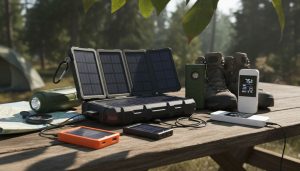
Before we jump in, here’s what you’ll learn today:
- How I set up and use a solar power bank correctly
- What specs actually matter (and which don’t)
- The best ways to charge with sunlight and USB
- How I keep my unit working efficiently for years
- Realistic charging times (not what the box claims)
- The features I always look for before buying
- Common mistakes I’ve learned to avoid
- My quick maintenance and troubleshooting checklist
How I Set Up and Use a Solar Power Bank
When I unpack a new solar power bank, I don’t just toss it under the sun and hope for magic. Like any tool, it performs best with a little preparation.
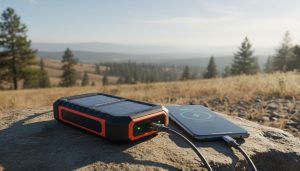
Check Your Power Bank Charge Before Use
First, I make sure it’s fully charged using a regular USB source. Even though it’s solar, I never rely solely on sunlight for the first charge. A stable start ensures the internal battery calibrates properly. I plug it into a wall adapter and wait for all LED indicators to light up.
Position Your Power Bank Under Sunlight
Once the initial charge is done, it’s time to meet the sun. Placement matters more than people think. I set the power bank on a flat surface, preferably at a 30–45° angle facing direct sunlight. If I’m hiking, I attach it to my backpack with the solar panels facing upward. If it’s cloudy, I lower expectations; partial sunlight charges slower, but every bit helps.
Solar power bank charging a smartphone outdoors on a sunny day
Connect Devices to Your Power Bank Properly
When my phone or smartwatch needs juice, I use short, high-quality cables. Cheap ones lose power fast. Most solar chargers have multiple USB ports, which means I can charge two or three gadgets simultaneously. However, I try not to overload it; otherwise, each device receives less power.
Understanding Power Bank Specifications Before You Begin
Before you hit the trails or the beach, you’ll want to understand what your solar charger can actually handle.
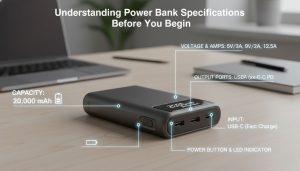
Power Bank Capacity and Storage Potential
The internal battery capacity determines how many recharges you get. For example, my 20,000mAh model can charge my phone roughly four times. Smaller units are great for emergencies, but not for long trips.
If you’re new to portable charging, I explained more about first-time usage here https://pickerzen.com/how-to-use-a-power-bank-for-the-first-time/
Solar Input and Realistic Expectations
Most people assume solar charging is fast it’s not. Even under perfect conditions, it takes hours. My larger charger takes nearly 15–20 hours of direct sunlight to fill completely. The trick is to let it charge gradually over several days when camping.
Power Bank IP Ratings and Durability Factors
If you plan to use it outdoors, check the IP rating. Mine is IP65, meaning it’s dustproof and can handle light rain. But it’s not waterproof, don’t test that in the pool.
Output Speed and Device Safety
Many units offer 2.1A or higher output. I match my device’s charging speed with the output port to avoid overheating. Some advanced models have smart-charging chips that automatically adjust output.
For a closer look at power bank performance differences, the Anker official blog provides real-world data comparing various models.
Power Bank Charging Methods: My Two-Step Strategy
Solar power banks offer two charging options: sunlight and USB. I use both depending on where I am.
Using Sunlight Effectively
For solar input, I set it under clear skies around midday. I never place it behind glass because that reduces intensity. I also keep the panels clean, dust reduces efficiency by nearly 20%.

Using a USB Source for Quick Refills
When I’m home or near a power outlet, I top it up via USB. It’s faster and usually takes about 6–8 hours. Some models support fast-charging USB-C inputs, which I love when prepping for travel.
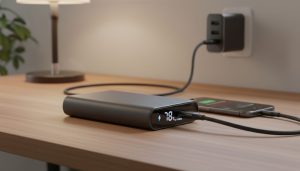
How I Charge Devices with My Solar Power Bank
Step-by-Step Process
- I check that the internal battery has enough stored energy (LED indicators help).
- I connect my phone or tablet using a short cable.
- I let it charge fully before connecting another device.
- If charging multiple items, I monitor the output balance.
Monitoring Progress and Avoiding Overload
Most solar banks have built-in protection against overcurrent. Still, I unplug devices once they’re full. Leaving them attached too long shortens both battery lives.
Maintenance Tips That Actually Extend Lifespan
A solar power bank is only as good as the care it gets.
Cleaning the Panels
Dirt is the silent killer of charging efficiency. I gently wipe my panels with a microfiber cloth after every trip. Never use alcohol-based cleaners they can scratch the coating.
Avoiding Heat and Moisture
I learned this one the hard way. Leaving the unit on a car dashboard under direct heat can damage the battery. I always store mine in a shaded, dry place when not in use.
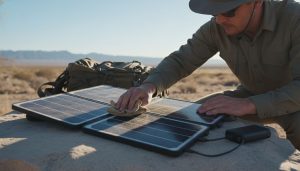
Proper Storage Habits
If I’m not using it for a while, I keep it about 50% charged. Storing it empty can harm the cells over time.
How Long Does It Take to Recharge Fully?
This question has no single answer. Charging time depends on sunlight intensity, panel size, and battery capacity.
Time Comparison: Sunlight vs Wall Outlet
My medium-sized solar bank takes roughly 16 hours under direct sunlight to reach 100%. With a wall charger, the same process takes 6–7 hours. The takeaway? Use sunlight as a backup, not a primary source, unless you’re off-grid.
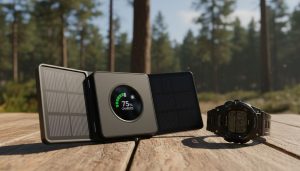
Factors That Affect Recharging Time
Clouds, shade, and dust all slow things down. I also noticed the angle of sunlight plays a big role. Midday is always best; early mornings and late afternoons aren’t efficient.
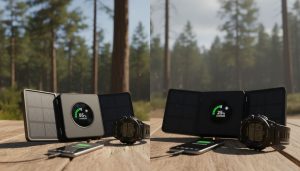
Power Bank Features I Look For Before Buying
After years of testing, these are the features I consider essential.
Efficiency and Durability
High-efficiency panels make a massive difference. A sturdy frame helps too, especially if you travel often. I once dropped mine on rocky ground, and it survived because of a rubberized case.
Useful Add-ons That Actually Help
Some power banks include built-in flashlights, compasses, and even wireless charging pads. These are fun extras but not deal-breakers. What matters is reliability. LED indicators showing real battery status? Absolutely worth it.
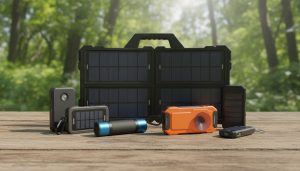
Common Power Bank Mistakes and How I Avoid Them
Overloading and Poor Placement
The biggest mistake I used to make was connecting too many gadgets at once. It slows everything down. Another common error is placing it in shaded or low-light areas. I always find a clear, sunny spot with no obstructions.
Misunderstanding Charging Time
People often expect instant results from solar energy. I manage my expectations; it’s slow but sustainable. For emergencies, I charge via USB first, then let the sun maintain the charge level.
Troubleshooting Quick Fixes
If the power bank doesn’t seem to charge, I go through this checklist:
- Swap the cable; it’s often the culprit.
- Check the USB port for dust or debris.
- Reset the device if there’s a hidden button (many have one).
- Leave it in bright sunlight for an hour; sometimes, the battery needs a wake-up.
If all fails, I check the manufacturer’s guide or warranty options. A few brands offer free replacements within a year.
My Final Routine: Combining Convenience and Conservation
My routine is simple: I charge via USB at home, top it up under the sun during trips, and clean it regularly. It’s my way of blending convenience with sustainability. A solar power bank is more than a gadget; it’s a small step toward energy independence.
Frequently Asked Questions
- Can I charge multiple devices at once?
Yes, as long as your model supports it. But charging speed decreases with each added device. - Does it charge through windows?
It does, but slowly. Glass blocks a lot of UV rays, which reduces conversion efficiency. - Can I leave it outside overnight?
No. Dew and temperature changes can affect performance. Always bring it indoors. - What should I do if it charges slowly?
Clean the panels, adjust the angle, and ensure it’s under full sun. Try a different cable if using USB. - Is it safe to use in the rain?
Only if your model is water-resistant (check the IP rating). Otherwise, keep it dry.
Conclusion
Using a solar power bank isn’t rocket science, but it rewards patience and consistency. After years of testing, I’ve learned that success depends on realistic expectations, regular care, and proper placement. Whether you’re camping, traveling, or just prepping for power outages, a well-managed solar charger can keep your essentials running smoothly.
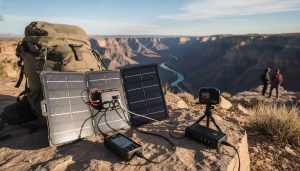
If you’re still learning about portable charging basics, I recommend checking out my detailed beginner’s post on using a power bank for the first time.